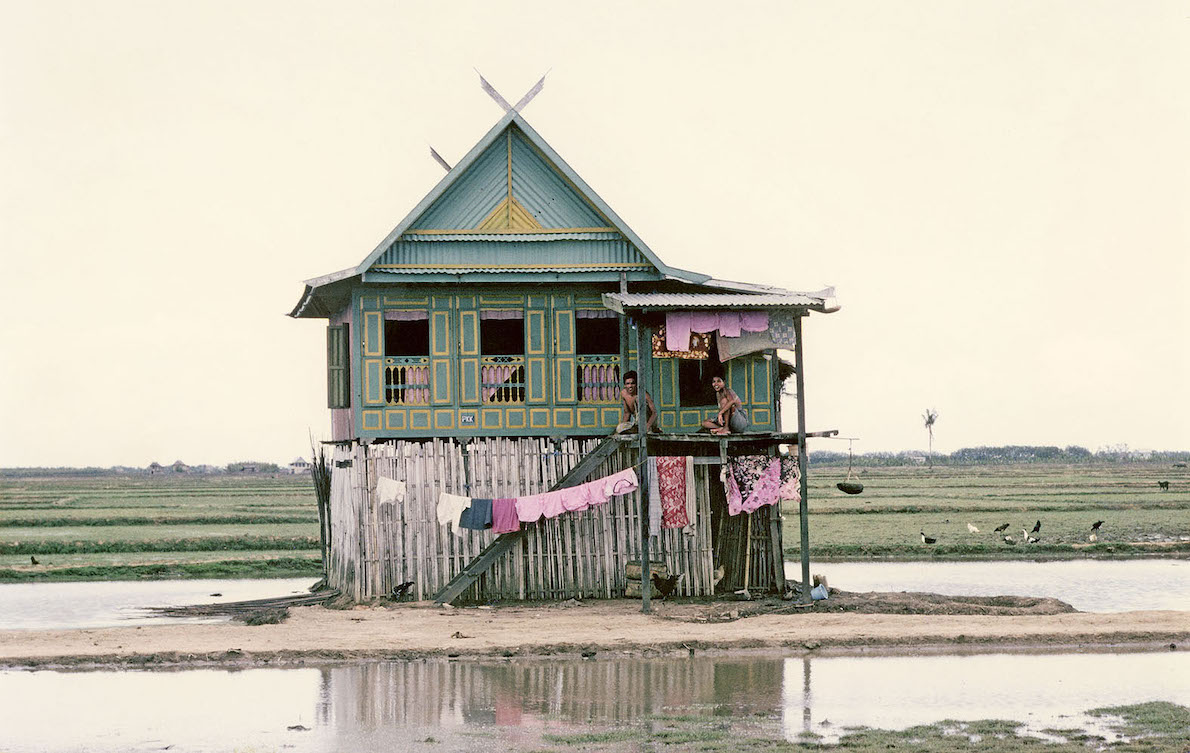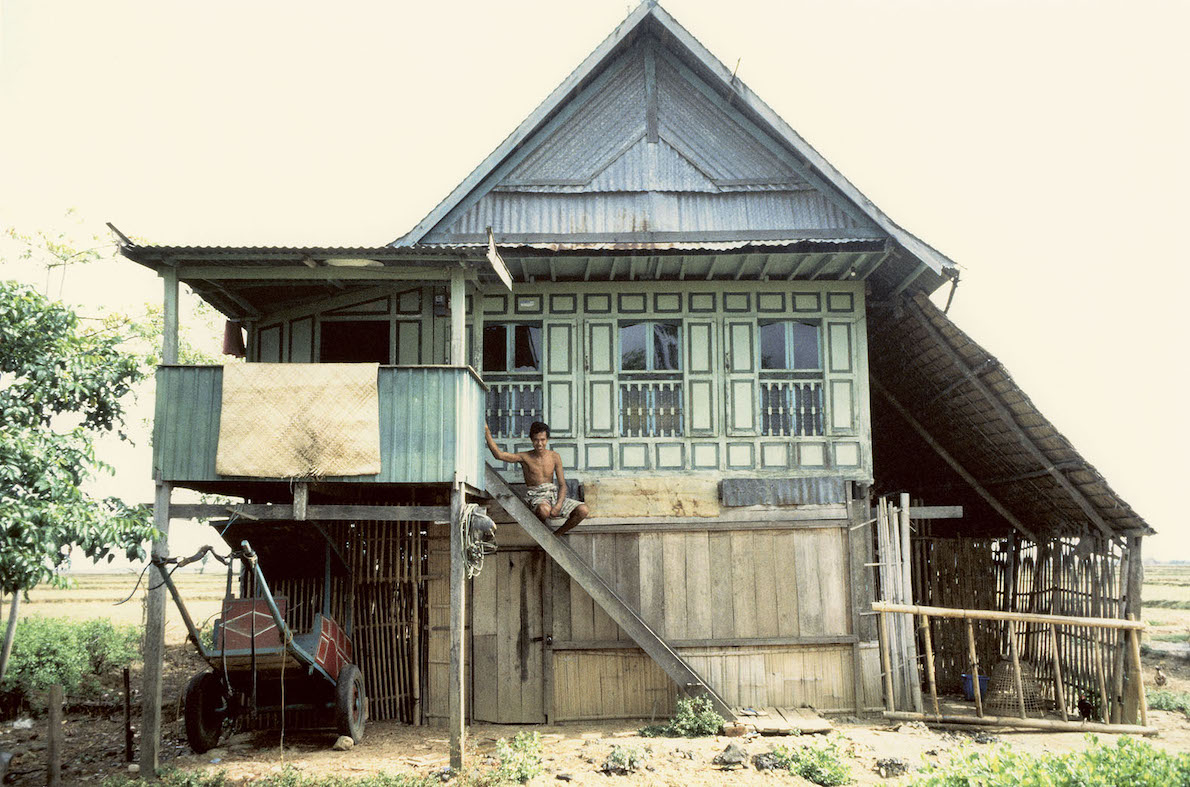In newly published photographs from the 1980s, Ursula Schulz-Dornburg captures the symbolic vernacular architecture of Indonesia’s Bugis farmers

German photographer Ursula Schulz-Dornburg has released a new book – Bugis Houses, Celebes – portraying the the distinctive houses of the Bugis or To-Ugiq people in central Indonesia. The photographs originate from a 1983 research trip Schulz-Dornburg took to Sulawesi (formerly known as Celebes); in the southwestern peninsula of the island, where the Bugis are the largest ethnic group, she came across houses belonging to Bugis farmers, and was instantly fascinated by their expressive architecture.
The photographs form somewhat of a historic document, capturing the particular domestic architecture of Bugis farmers that responds both to environmental conditions and spiritual beliefs. The elevated wooden and bamboo structures avoid the impacts of flooding which occurs on the paddy fields they are built on. But, suspended between ground and sky, the houses are also thought to reflect the Bugis’ creation myth: the idea that the gods of the upper and lower worlds came together to create humans to populate the uninhabited middle world.

‘The house constitutes one’s own microcosm, reflecting the three-layered cosmos of Bugis mythology,’ writes Sirtjo Koolhof – a Dutch academic specialising in the history and culture of the Bugis people – in the book’s accompanying essay. As Koolhof describes, a Bugis house is built on posts and its entrance door is reached by stairs. Interior rooms – where guests are received, food is cooked, and people sleep and live – form the layer of the house representing the middle world. The attic, where rice sheaves were traditionally stored, is associated with the upper world, while the space under the house corresponds to the lower world.
Elements of the houses’ structural and architectural details typically represent aspects of who the inhabitants are. For instance, the form of the stairs and the number of panels making up the gable suggest the occupants’ position in the social hierarchy. Temporary extensions of the houses, meanwhile, point to an upcoming wedding in the family.

While traditional Bugis houses are still built, in the last few decades they have increasingly been replaced by modern brick and concrete structures at ground level. Schulz-Dornburg’s body of work thus not only documents the houses’ physical forms as they were almost 40 years ago, but reflects on the precarious place of tradition in the present day, particularly as expressed through vernacular architecture.
Bugis Houses, Celebes is published by MACK















